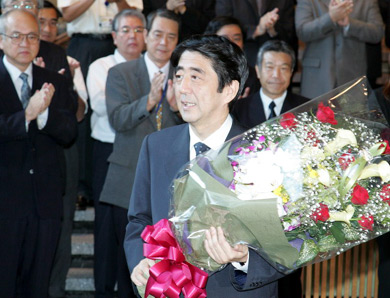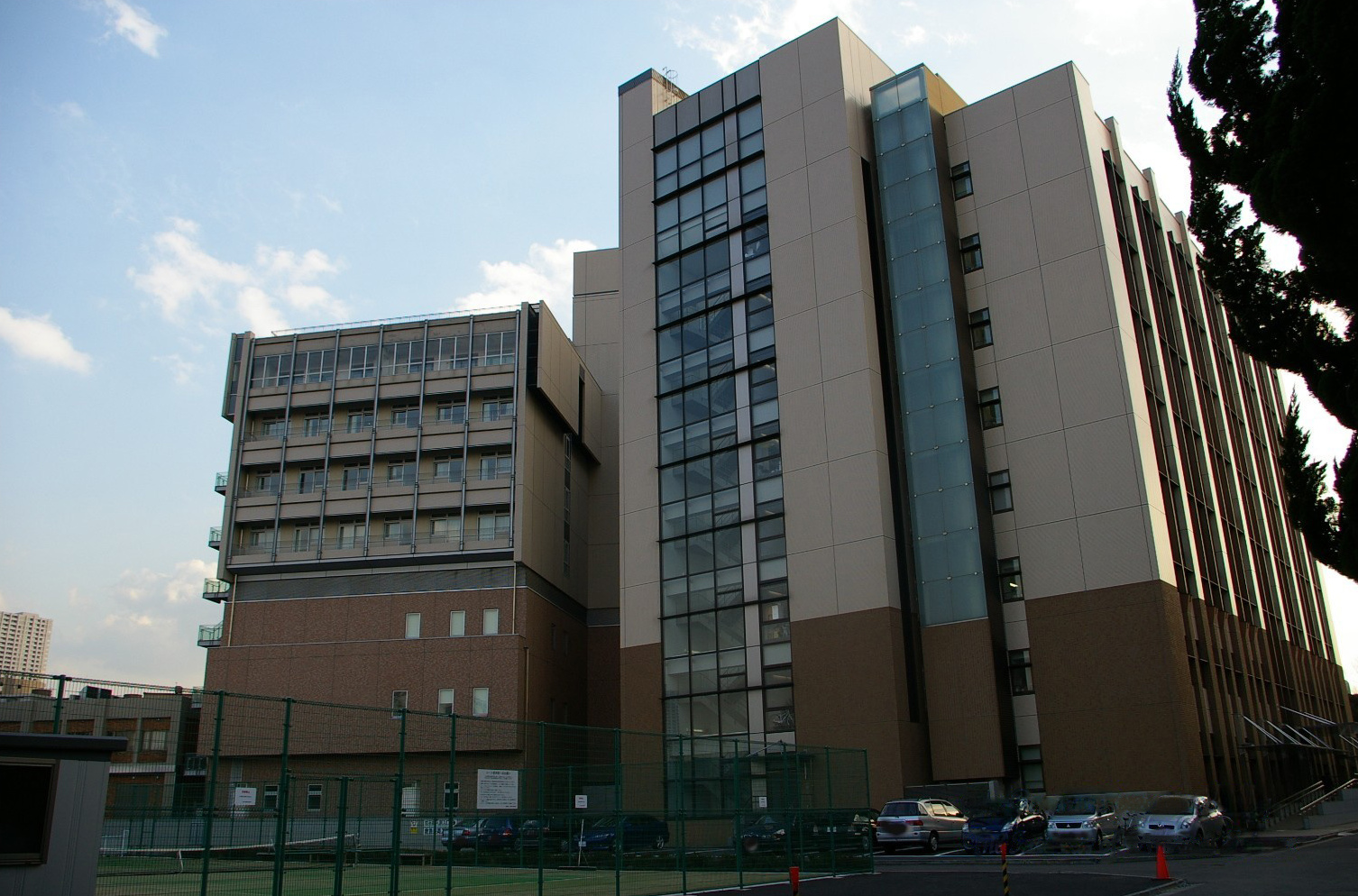|
Hokkaido University
, or , is a public research university in Sapporo, Hokkaido, Japan. Founded in 1918, it is the fifth-oldest government-authorised university in Japan and one of the former Imperial Universities. The university finds its roots in Sapporo Agricultural College, which was a pioneer in the country's modern agricultural education and research, founded in 1876. The university's motto is 'Boys, Be Ambitious', which is said to be the parting words of the American dean of the Agricultural College, William S. Clark. The university has 12 undergraduate faculties and 21 postgraduate schools. The university mainly operates on two campuses: the main campus is located in downtown Sapporo, just north of Sapporo Station, and the other campus is located in Hakodate, primarily used by the Faculty of Fishery Sciences. History The history of the university dates to the formal incorporation of Yezo as Hokkaido into the Japanese realm. Director of the Hokkaidō Development Commission Kuroda Kiy ... [...More Info...] [...Related Items...] OR: [Wikipedia] [Google] [Baidu] |
Sapporo Agricultural College
was a school in Sapporo, Hokkaidō established in September 1875 for the purpose of educating students in the agriculture industry. History The first president of the college was Zusho Hirotake. Dr. William S. Clark, a graduate of Amherst College and the president of the Massachusetts Agricultural College (MAC) was appointed as the vice president of the college. Clark taught in Sapporo only eight months but left a deep impact on the students. Specifically, his parting words, "Boys, be ambitious," have become among the most famous phrases in Japan. He was accompanied by three other MAC alumni, David P. Penhallow, William Penn Brooks and William Wheeler. Cecil Peabody was a professor of mathematics (circa 1878 to 1882). The college is well known in Japan as a successful Japanese-English immersion school, which produced many good English speakers and writers. The early graduates, especially Classes 1880–1885, played a directional role in modernizing Japan.Akaishi, K. (20 ... [...More Info...] [...Related Items...] OR: [Wikipedia] [Google] [Baidu] |
Kuroda Kiyotaka
Count was a Japanese politician and general who served as prime minister of Japan from 1888 to 1889. He was one of the '' genrō'', or senior statesman of the Meiji era. Born in the Satsuma Domain to a samurai family, Kuroda was involved in the colonization of Hokkaido, the Japan–Korea Treaty of 1876, and the suppression of the Satsuma Rebellion in 1877. After his tenure as prime minister, which ended due to his inability to revise the unequal treaties imposed on Japan, Kuroda also served as Minister of Communications and President of the Privy Council. Biography As a Satsuma samurai Kuroda was born to a samurai-class family serving the Shimazu ''daimyō'' of Kagoshima, Satsuma Domain, in Kyūshū. In 1862, Kuroda was involved in the Namamugi incident, in which Satsuma retainers killed a British national who refused to bow down to the ''daimyo's'' procession. This led to the Anglo-Satsuma War in 1863, in which Kuroda played an active role. Immediately after the war, ... [...More Info...] [...Related Items...] OR: [Wikipedia] [Google] [Baidu] |
Namboku Line (Sapporo)
The is a rubber-tyred metro line in Sapporo, Hokkaido, Japan. It is part of the Sapporo Municipal Subway system. Its name literally means ''South-North Line'', and it runs from Asabu Station in Kita-ku to Makomanai Station in Minami-ku. The Namboku Line color on maps is green, and its stations carry the letter "N" followed by a number. Station list * All stations are located in Sapporo. History * 16 December 1971: Kita-Nijūyo-Jō – Makomanai section opens; 1000 series trains introduced. * 16 March 1978: Kita-Nijūyo-Jō – Asabu section opens; all trains operated as 8-car sets. * 1 October 1978: 3000 series trains introduced. * 14 October 1994: Reien-Mae Station renamed Minami-Hiragishi Station. * September 1995: 5000 series trains introduced. * 27 June 1999: 1000/2000 series trains withdrawn. * 18 August 2008: Women-only cars introduced on trial basis (until September 12, 2008). * 15 December 2008: "Women and Children Comfort Car" introduced. * 30 January ... [...More Info...] [...Related Items...] OR: [Wikipedia] [Google] [Baidu] |
Gingko Ave
''Ginkgo'' is a genus of non-flowering seed plants, assigned to the gymnosperms. The scientific name is also used as the English common name. The order to which the genus belongs, Ginkgoales, first appeared in the Permian, , and ''Ginkgo'' is now the only living genus within the order. The rate of evolution within the genus has been slow, and almost all its species had become extinct by the end of the Pliocene. The sole surviving species, ''Ginkgo biloba'', is found in the wild only in China, but is cultivated around the world. The relationships between ginkgos and other groups of plants are not fully resolved. Prehistory The ginkgo (''Ginkgo biloba'') is a living fossil, with fossils similar to the modern plant dating back to the Permian, 270 million years ago. The ancestor of the genus is estimated to have branched off from other gymnosperms about 325 million years ago, while the last common ancestor of today's only remaining species lived not earlier than 390,00 ... [...More Info...] [...Related Items...] OR: [Wikipedia] [Google] [Baidu] |
Coordinating Committee For Earthquake Prediction
The Coordinating Committee for Earthquake Prediction (CCEP) (Japanese language, Japanese: 地震予知連絡会, ''Jishin Yochi Renraku-kai'') in Japan was founded in April 1969,About CCEP CCEP, accessed 2011-03-19 as part of the Geodesy Council, Geodesy Council's Second Earthquake Prediction Plan, in order to carry out a comprehensive evaluation of earthquake data in Japan.Geochemical challenge to earthquake prediction ''Earthquake Prediction: The Scientific Challenge (NAS Colloquium)'', published 1996, accessed 2011-03-19 The committee consists of 30 members and meets four times each year, as well as publishing a report on its activities twice e ... [...More Info...] [...Related Items...] OR: [Wikipedia] [Google] [Baidu] |
Hokkaido University Hospital
is the list of islands of Japan by area, second-largest island of Japan and comprises the largest and northernmost prefectures of Japan, prefecture, making up its own list of regions of Japan, region. The Tsugaru Strait separates Hokkaidō from Honshu; the two islands are connected by railway via the Seikan Tunnel. The largest city on Hokkaido is its capital, Sapporo, which is also its only cities designated by government ordinance of Japan, ordinance-designated city. Sakhalin lies about to the north of Hokkaidō, and to the east and northeast are the Kuril Islands, which are administered by Russia, though the four most southerly are Kuril Islands dispute, claimed by Japan. The position of the island on the northern end of the archipelago results in a colder climate, with the island seeing significant snowfall each winter. Despite the harsher climate, it serves as an agricultural breadbasket for many crops. Hokkaido was formerly known as ''Ezo'', ''Yezo'', ''Yeso'', or ''Yes ... [...More Info...] [...Related Items...] OR: [Wikipedia] [Google] [Baidu] |
Shinzō Abe
Shinzo Abe (21 September 1954 – 8 July 2022) was a Japanese politician who served as Prime Minister of Japan and President of the Liberal Democratic Party ( LDP) from 2006 to 2007 and again from 2012 to 2020. He was the longest-serving prime minister in Japanese history, serving for nearly nine years in total. Born in Tokyo, Abe was a member of the Satō–Kishi–Abe family as the son of LDP politician Shintaro Abe and grandson of prime minister Nobusuke Kishi. He graduated from Seikei University and briefly attended the University of Southern California before working in industry and party posts, and was first elected to the House of Representatives in 1993. Abe was LDP secretary-general from 2003 to 2004 and Chief Cabinet Secretary under Junichiro Koizumi from 2005 to 2006, when he replaced Koizumi as prime minister. Abe became Japan's youngest post-war premier, and the first born after World War II. A staunch conservative and member of the Nippon Kaigi organizatio ... [...More Info...] [...Related Items...] OR: [Wikipedia] [Google] [Baidu] |
Super Global Universities
is a funding project by the Japanese government that began in 2014. The project aims to enhance the globalization of the country's public and private universities so that graduates can "walk into positions of global leadership". The project is sometimes referred to as 'TGUP'; it has also been (mis)translated directly in English as "Super Global Universities", and therefore referred to on some university websites as 'SGU' or 'SGUP'. History The Top Global Universities Project was launched in 2014, as the latest in a series of education ministry-led project initiatives to internationalize higher education in Japan and increase student mobility. An early, major project in this series started in 2009, when the Japanese Ministry of Education, Culture, Sports, Science and Technology (MEXT) began a program to encourage foreign students to study at Japanese universities. The program was called Global 30. Thirteen universities participated by creating and offering English-only undergradu ... [...More Info...] [...Related Items...] OR: [Wikipedia] [Google] [Baidu] |
Ministry Of Education, Culture, Sports, Science And Technology
The , also known as MEXT, is one of the eleven ministries of Japan that compose part of the executive branch of the government of Japan. History The Meiji period, Meiji government created the first Ministry of Education in 1871. In January 2001, the former Ministry of Education, Science, Sports and Culture and the former merged to become the present MEXT. Organization The Ministry of Education, Culture, Sports, Science and Technology currently is led by the Minister of Education, Culture, Sports, Science and Technology, minister of education, culture, sports, science and technology. Under that position is two state ministers, two parliamentary vice-ministers, and administrative vice-minister, and two deputy ministers. Beyond that the organization is divided as follows. Minister's Secretariat The Minister's Secretariat is the department that manages general policies that affect the Ministry of Education, Culture, Sports, Science and Technology as a whole. These functions in ... [...More Info...] [...Related Items...] OR: [Wikipedia] [Google] [Baidu] |
National University Corporation
A is a corporate body (legal entity) established under the provisions of the ''National University Corporation Act'' (2003) for the purpose of establishing a national university in Japan. History As part of promoting the reform of Japanese universities, all Japanese national universities has been incorporated as a National University Corporation since 2004. In 2018, National University Corporation Gifu University and National University Corporation Nagoya University integrated the new " Tokai National Higher Education and Research System", which became the first case of a Corporation owning two universities.【教育の森】国立初・名古屋大と岐阜大 運営法人統合/研究と地域創生 相乗効果狙い< ... [...More Info...] [...Related Items...] OR: [Wikipedia] [Google] [Baidu] |
Sechi Katō
Sechi Katō (1893–1989) was a chemist who became the first woman to be a principal investigator at RIKEN, Japan's national Institute of Chemical and Physical Research. Katō was the first female student at Hokkaido University, and the third woman Doctor of Science in Japan. She developed spectrometric analysis of organic materials in Japan. Katō faced personal adversity as well as gender barriers. When she was a baby, her mother and two of her siblings were killed when their house caught fire after collapsing in an earthquake. Her father died a few years later at the age of 43. Katō married young and had two children, one of whom died in battle in World War II. She lived to the age of 95. Early life and education Sechi Katō was born on 2 October 1893 in a wealthy farming family in Oshikiri Village (now Mikawa) in Yamagata prefecture. In October the following year, the family house was destroyed in a major earthquake, with a subsequent fire killing her mother and two of ... [...More Info...] [...Related Items...] OR: [Wikipedia] [Google] [Baidu] |





